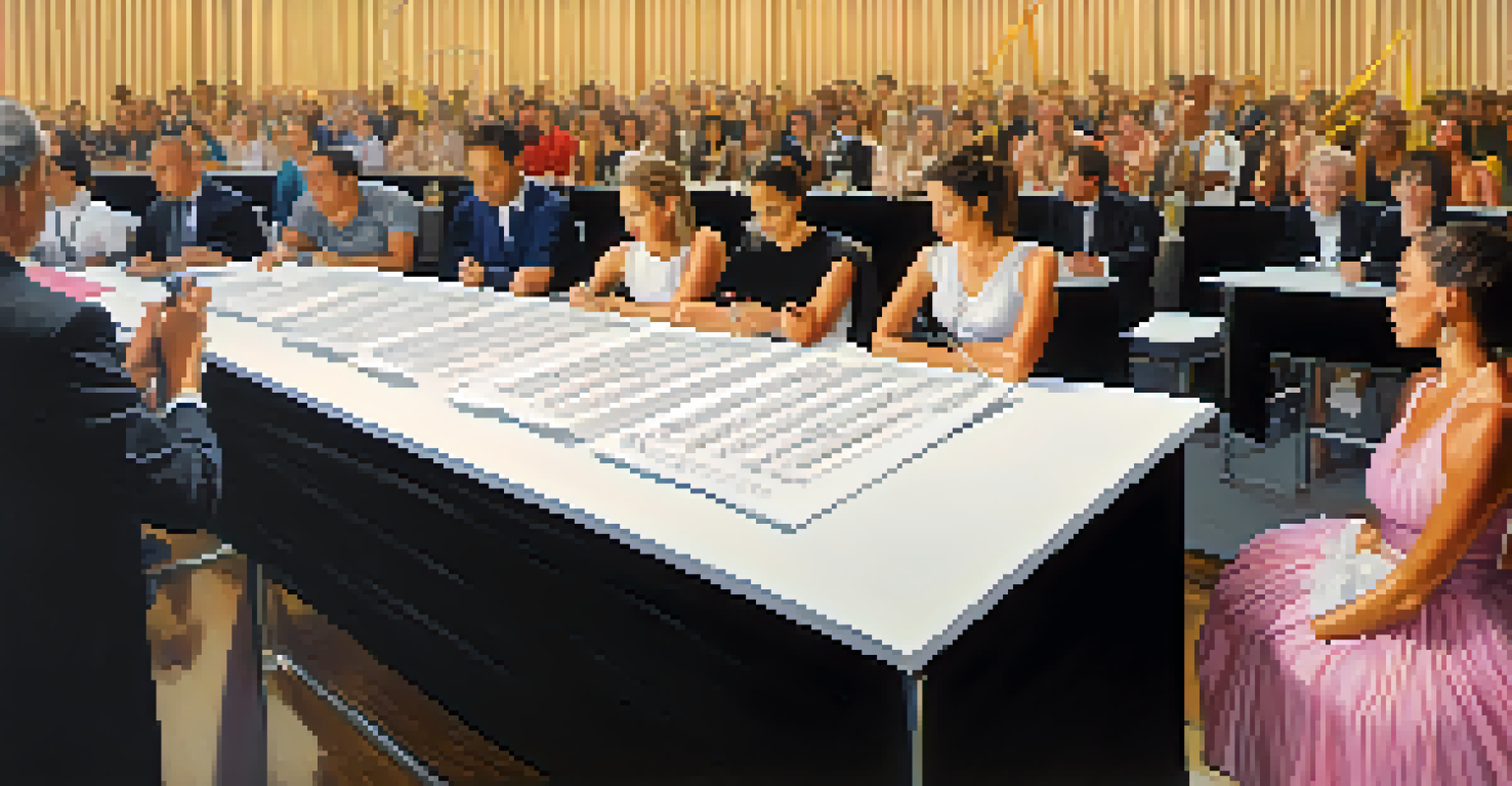Behind the Scenes: Organizing a Dance Competition Event

Understanding the Purpose and Goals of the Competition
Every successful dance competition starts with a clear purpose. Are you looking to showcase talent, promote a dance studio, or raise funds for a charity? Defining your goals helps shape the entire event's structure and messaging.
Dancing is creating a sculpture that is visible only for a moment.
Once the purpose is established, it’s crucial to identify the target audience. This includes dancers, families, judges, and even sponsors. Understanding who you’re catering to will guide decisions on everything from venue choice to marketing strategies.
Setting measurable goals, such as participant numbers or funds raised, can provide motivation and a benchmark for success. Keeping these goals in mind will help ensure the event remains focused and effective.
Choosing the Perfect Venue for Your Dance Competition
Selecting the right venue is like finding the perfect dance partner—it can make or break the event. Consider factors like size, accessibility, and facilities. A venue that can accommodate both performers and an audience comfortably is essential for a smooth experience.

Additionally, think about the technical requirements. Does the venue have appropriate flooring for dancers? Are there enough dressing rooms and waiting areas? Ensuring these details are sorted will keep both participants and spectators happy.
Define Competition Goals Clearly
Establishing a clear purpose and measurable goals is essential for shaping the event’s structure and ensuring success.
Finally, consider the location. A venue that is easy to get to, with ample parking and nearby accommodations, will attract more participants and spectators. A convenient location can boost attendance and create a more enjoyable atmosphere for everyone involved.
Creating a Budget: Balancing Costs and Quality
Budgeting is a crucial part of organizing any event, including a dance competition. Start by listing all potential expenses such as venue rental, sound equipment, and marketing materials. This will give you a clear picture of the financial landscape.
Success is where preparation and opportunity meet.
Don’t forget to consider potential income sources. Ticket sales, sponsorships, and participant fees can help offset costs. Creating a realistic budget ensures you can provide a quality experience without breaking the bank.
Lastly, keep a cushion for unexpected expenses. Whether it's a last-minute equipment rental or additional marketing costs, having a financial buffer can save you from stress as the event date approaches.
Engaging Judges: Finding the Right Experts
Judges play a pivotal role in any dance competition, bringing expertise and credibility to the event. Look for individuals with a strong background in dance, whether it’s as performers, instructors, or choreographers. Their experience will lend authority to the competition.
Consider diversity in your judging panel. Having judges from various dance styles and backgrounds not only enriches the experience but also appeals to a wider range of participants. It also ensures that different dance forms are appreciated and evaluated fairly.
Choose an Accessible Venue
Selecting a venue that accommodates both performers and spectators enhances the overall experience and boosts attendance.
Clear communication with judges about expectations and criteria is vital. Providing them with guidelines on how to score and what to look for can help maintain consistency throughout the competition.
Marketing Your Dance Competition Effectively
Marketing is the bridge that connects your event to potential participants and spectators. Start by identifying the best channels to reach your audience, whether through social media, local dance schools, or community boards. A multi-channel approach often yields the best results.
Create engaging content that highlights what makes your competition unique. Use eye-catching graphics, videos from past events, or testimonials from participants to draw interest. The more compelling your marketing materials, the more likely people will want to attend.
Don’t forget to leverage partnerships with local dance studios and community organizations. Collaborating with these entities can enhance your reach and foster a sense of community around the event.
Logistics: Planning the Event Day Schedule
Logistics are the backbone of any event, ensuring everything runs smoothly on the big day. Start by creating a detailed schedule that includes everything from registration times to performance slots. This helps keep the event organized and on track.
Assigning roles to volunteers and staff is crucial. Make sure everyone knows their responsibilities and where they need to be at specific times. Having a clear chain of command can help address any issues that arise quickly.
Engage and Communicate with Judges
Finding experienced judges and clearly communicating expectations fosters credibility and fairness in the competition.
Finally, consider the flow of the event. Transitioning between performances should be seamless, with clear communication to keep the audience engaged. A well-planned schedule minimizes downtime and maximizes enjoyment.
Post-Event: Reflecting on Success and Areas for Improvement
Once the competition wraps up, it’s time to reflect on the event’s success. Gather feedback from participants, judges, and attendees to understand what worked well and what could be improved. This information is invaluable for future events.
Celebrate the achievements! Whether it’s recognizing winners or thanking volunteers, acknowledging contributions fosters a positive atmosphere and encourages participation in future competitions.

Lastly, document the entire process. Keeping detailed notes on what was successful and what challenges arose will be incredibly helpful for planning future events. Every competition is an opportunity to learn and grow.